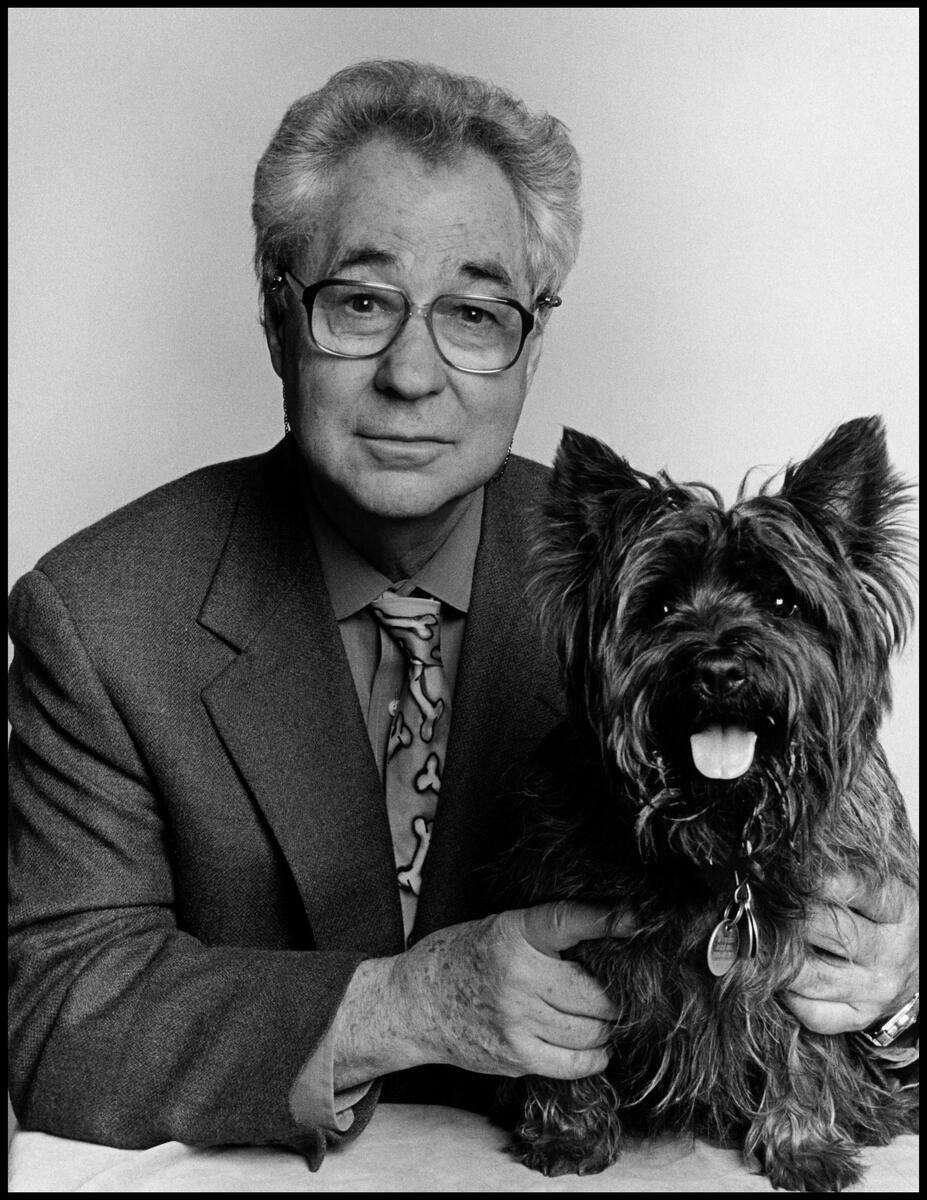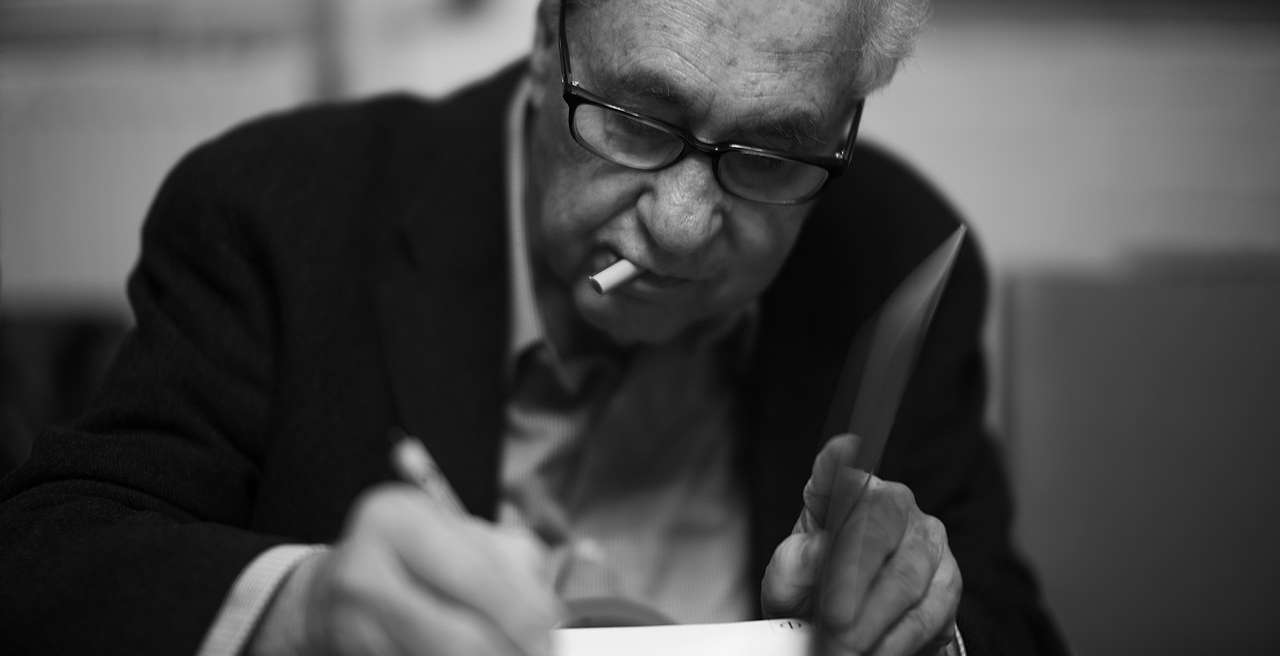The great American photographer Elliott Erwitt, one of the great names in twentieth-century photography, particularly documentary photography, on a par with other greats such as Robert Capa and Henri Cartier Bresson, has died in New York at the age of 95. A career spanning 70 years, always linked to the Magnum agency, many exhibitions around the world, many of them in Italy, always capturing great interest from the public.
Elliott Erwitt was born Elio Romano Ervitz in Paris in 1928 to Russian Jewish parents. He spent his childhood in Milan and emigrated to the United States in 1939 as a result of racial laws. Erwitt was living with his father in Los Angeles when he began taking portraits of locals to earn a living. In 1948 he moved to New York, the city that would provide him with material for much of his career and where his life and family would be focused. After working as a janitor, he took film courses at the New School for Social Research. Erwitt traveled to France and Italy in 1949 with the Rolleiflex camera he favored at the time. In 1951 he was drafted for military service and performed various photographic tasks while serving in an Army Signal Corps unit in Germany and France.
While in New York, Erwitt met Edward Steichen, Robert Capa and Roy Stryker, the former head of the Farm Security Administration. Stryker contributed to the careers of photographers such as Walker Evans, Ben Shahn, Dorothea Lange, Marion Post Wolcott, Gordon Parks and others. He initially hired Erwitt for a job in New Jersey for the Standard Oil Company, where Stryker was compiling a photographic library. Later, Stryker commissioned Erwitt to undertake a project documenting the city of Pittsburgh in 1950, a series that Erwitt published as a book in 2017.
In 1953, Erwitt joined Magnum Photos and worked as a freelance photographer for illustrated magazines such as Collier’s, Look, LIFE, and Holiday. In this capacity he photographed celebrities such as Marilyn Monroe, Grace Kelly, Jack Kerouac, John F Kennedy, and Jackie Kennedy. In 1959 it was he who captured the tense moment between Nikita ChrušÄëv and Richard Nixon during the diplomatic visit that became known as the “Kitchen Debate.” In 1964 Erwitt visited Cuba and made portraits of Fidel Castro and Che Guevara.
It was Erwitt’s firm belief that photography should speak to the senses and emotions rather than the intellect. “When photography happens, it comes easily, as a gift that should not be questioned or analyzed,” he said. In addition to more “institutional” photographs, so to speak, Erwitt’s research is best known for photographs that capture life’s most absurd and fascinating moments. Dog-related photographs, for example, perhaps his best-known production: dogs were for Erwitt a fruitful source of knowledge about humanity. He expressed his fondness for these animals, which formed the subject of four of his books, in this way: “...they are always available. Their owners desire immediate affection every day, at any hour of the day. A dog can never say he has anything else to do. He can never have a headache, like a wife.” Much of Erwitt’s photography was then about love. A couple caught in the side mirror of a car constitutes one of Erwitt’s most famous and beloved shots, while another pair of subjects, Robert and Mary Frank, shown dancing in a kitchen, gave rise to another famous image. Erwitt’s look at his personal life, through the image of his wife and child, has touched many since its initial exposure in the 1955 exhibition entitled Family of Man.


In the late 1960s, Erwitt also served as president of Magnum for three years. He then turned to film: in the 1970s he produced several noteworthy documentaries and in the 1980s eighteen comedies for HBO. Always strongly opposed to the artistic pretensions of photography, Erwitt was known for his benevolent irony and dedication to portraying human emotions.
In 1988 Erwitt took the time to look back over his 40-year career and classify his entire archive. This allowed him over the next two decades to publish a vast number of publications on his work, including retrospectives such as Personal Exposures (1988), Snaps (2001) and XXL Special Edition in 2012. He has also published numerous photographic books. focusing on recurring themes in his work, such as On the Beach (1991), To the Dogs (1992) and Dog Dogs (1998), Museum Watching (1999) and Kids (2012), as well as a look at some of the cities he holds dear: New York (2008), Rome (2009) and Paris (2010).
In 2002, Erwitt was awarded the Royal Photographic Society’s Centennial Medal and in 2011 he received the Lifetime Achievement Award from the International Center of Photography, which called him “an eyewitness to history and a dreamer with a camera.”
Cristina de Middel, president of Magnum, remembers him this way, “It is difficult to measure the impact Elliott Erwitt had on Magnum and the world of photography. His images helped build our general understanding of who we are as a society and as human beings and inspired generations of photographers despite changes in the industry and trends. He was a tireless icon generator. The combination of his casual and humorous approach to the act of photography and his obsessive dedication made him a unique artist whom we have lost today with great sadness. Elliott Erwitt was part of Magnum for 70 of our 76 years of existence as a cooperative and agency, and his work and archive are a fundamental part of our DNA and mission. We at Magnum will proudly protect the inspiring legacy that his images will continue to represent in the history of art and photography.”
 |
| Farewell to Elliott Erwitt, one of the greats of photography leaves us |
Warning: the translation into English of the original Italian article was created using automatic tools. We undertake to review all articles, but we do not guarantee the total absence of inaccuracies in the translation due to the program. You can find the original by clicking on the ITA button. If you find any mistake,please contact us.